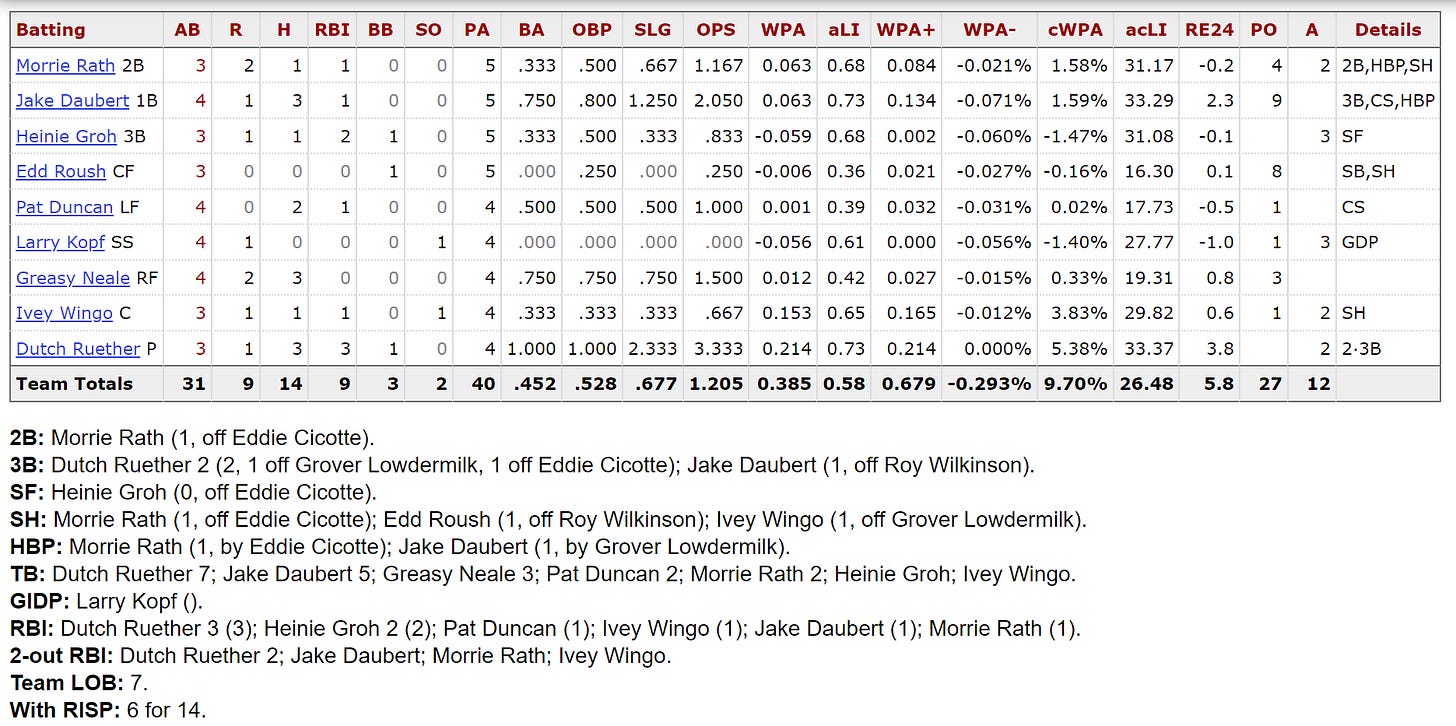What data is/isn't... and an Intro to Slammer Score
Good data isn't a decision-maker. It's a tool for decision-makers.
Let’s preface this entire post with this:
Throwing strikes is important. Plate discipline is important. Making routine plays is important. Baseball IQ is important. Competing is important. Coachability is important. Effort is important. Batting practice is not the same as hitting in a game. Bullpen work isn’t the same as pitching in a game to a live batter.
Baseball is complicated. The puzzle has a million pieces. Everything listed above is a piece of the puzzle. For every amateur baseball player, the goal is to help them put together as much of the puzzle as possible. And in 2023, more than ever, data is included in the million piece puzzle.
Data and Baseball
Data can be a point of contention in baseball. Here’s the problem, the game has been swimming in data since before any of us were born. Batting average is data. ERA is data. Time of first pitch is data. These things have all been archived since the early days of the sport.
On October 1, 1919, Dutch Ruether went 3 for 3 with two triples out of the 9-hole as the Cincinnati Reds beat the Chicago White Sox… well before the invention of the modern computer.
So, what makes todays data any different? Well, there’s a whole lot more of it. And with a whole lot more data, there are more opportunities for confusion in communication and misapplication. But before we go any further, let’s talk about what data is and what data isn’t.
What data is:
a way to measure what’s going on now.
an opportunity to learn.
a piece of a complicated puzzle.
a tool for insight in decision-making.
What data isn’t:
an absolute - data provides an opportunity for discussion, not a conclusion.
In a world where you have an opportunity to use data in a meaningful way and you choose not to, are you not saying that you think you’re currently doing everything right?
Data can validate the things that you are doing right and it can provide insight to areas for improvement - and doesn’t that make everyone better for it?
Don’t take it from me, take it from Brendan Donovan of the St. Louis Cardinals…
At Slammers, we are tasked with giving athletes between the age of 7 and 18, a high quality baseball training and competition experience. So, let’s use data to raise the bar and set the gold standard for youth athlete development.
What are we measuring?
With the Loden Score, we are measuring the raw athleticism of each athlete.
With our Rapsodo tools, we are scoring hit quality in batting practice and pitch quality in bullpens.
What do we know about what we’re measuring?
They are things that matter.
The Loden Score is strongly correlated to arm strength, running speed, and how hard an athlete can hit the ball - all things that are of interest to high school coaches, college coaches, and professional scouts.
With our Rapsodo hitting tool, we can break down how often a hitter is hitting line drives and how frequently they are hitting it hard - again, things decision-makers like to see…
With our Rapsodo pitching tool, we can identify spin, velocity, and movement. By tracking these metrics, we can provide simple information to players such as: what pitch needs some work, what pitch to throw more, what pitch to throw less, and maybe even where in the zone to throw a pitch.
Boston College probably liked Gavin Hasche’s 3000 rpm breaking pitches… something very few pitchers in his class possess… something we probably could’ve known from the first time he threw a breaking ball…

Don’t misunderstand, we’re not trying to get 12-year-olds scouted to play professional baseball… However, if we know what recruiters and coaches want to see 6-8 years down the road and we can measure and track those things, does it not make sense to do so?
Internally, we can identify what each and every one of our athletes needs to be the best version of themselves and provide them with resources to maximize their potential starting now. Ideally, for as many of our athletes as possible, it is their decision on whether or not they want to continue to play baseball after high school.
So, What is a Slammer Score?
An early rendition of a Slammer Score provides all of us with a tool that any club baseball organization can have, but very few, if any, do:
A Slammer Score is a number to benchmark baseball development.
With everything we measure, we have age averages.
With the age averages we have developed a scoring system that can identify where an athlete is ahead, where they are behind, and where they are right on track.
By identifying these things at a young age, we can give the developing athlete what they need to catch-up or stay ahead; and help provide a realistic roadmap for where they are going.
At it’s simplest, the application for the Slammer Score is for the 13-year-old who is a very good baseball player and has a bright future on the diamond, but is a below average athlete. If we can get him to start chipping away at getting faster and more explosive now, then he is better equipped to pair tools with his exceptional on-field play when it comes time to get recruited in 4-5 years.
Because what it takes to be a very good baseball player at 13 is not all that it takes to be a very good baseball player at 16, or 18, or 20, or 24.
Much more to come on the topic…


